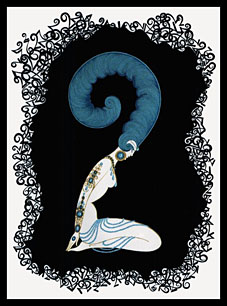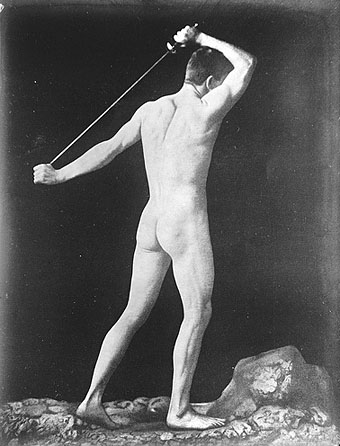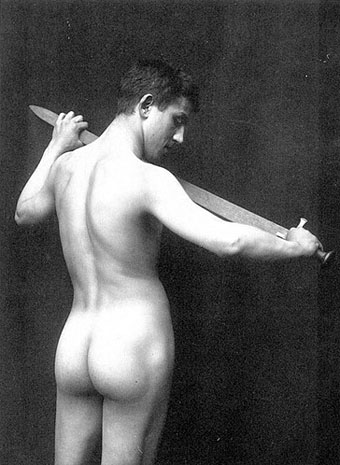
Numeral by Erté. Via Fabulon.
In which { feuilleton } celebrates its second birthday. As always, it’s a surprise seeing what catches the attention of readers or random browsers. The five most popular posts from the past year were as follows:
• The art of ejaculation. I saw Cary Kwok’s work mentioned in a gay magazine so followed it up on the web, whereupon it occurred to me that the male moment of climax was rarely depicted visually outside the world of porn. Hence a necessarily small list of all the examples I could think of which was then linked on a couple of popular sex-related sites.
• Two guys kissing. My ungenerous reaction in May to the death of Jerry Falwell, using a splendidly erotic photo by Jack Slomovits. It’s mainly the title which attracts people, I think, some of the most popular search phrases bringing people here are “two guys kissing” or “two gays kissing”. One can only hope that the searchers aren’t disappointed.
• The art of Takato Yamamoto. I’m surprised this has been so popular considering the artist isn’t very well-known. If I was a publisher I’d be arranging reprints of his books for Europe and the US.
• Barney Bubbles: artist and designer. No surprise that this is still receiving attention seeing as it’s now linked on the Barney Bubbles Wikipedia page as well as a great many design blogs.
• Neville Brody and Fetish Records. In a similar vein, one of my earliest posts is still very popular as well, possibly because there isn’t a good selection of Brody’s early album art anywhere else.
And since I started making static archive pages for some categories (for my convenience as much as that of readers), the Gay artists archive has proved very popular even though it’s not been there for long. That’s either an indicator of the readership demographic or evidence that people are more curious than they often let on.
Thanks again for reading!
John x




